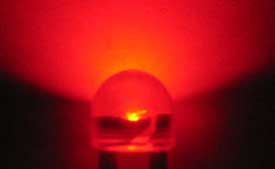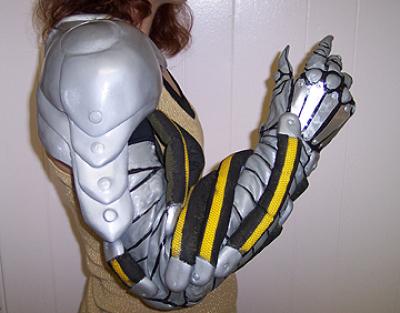Scientists in Japan have developed a new biofuel powered power cell that they hope to one day use as a power source for devices like pacemakers, insulin pumps, and maybe even one day powered prosthetic limb replacements. Yuji Kamitaka, Seiya Tsujimura, Norihiko Setoyama, Tsutomu Kajino and Kenji Kano created the cell. The breakthrough seems to have come when they figured out a way to remove the need a mediating molecule that would be stable in two oxidation states. Normally this mediator molecule would speed up the transfer of the electrons, the Japanese team managed to do so with a simpler device.
Biofuel cells are energy conversion systems, which utilize enzymes or microorganisms as electrocatalysts and may operate under mild conditions (20–40 °C and near neutral pH).1–5 All compounds to be utilized by living things such as sugars, alcohols, amines, organic acids and hydrogen and also, in principle, other variety of large molecular-weight biomasses are possible substances for biofuel cells. There are varieties of redox enzymes that catalyze the oxidation of these substances in nature. These substances are oxidized with the aid of the corresponding redox enzymes and the electrons are transferred to the anode. At the cathode, the electrons are passed to dioxygen in ideal biofuel cells. The dioxygen reduction may be catalyzed by transition-metallic catalysts, but the metallic catalysts, even platinum, are not so powerful under near-neutral conditions. Some suitable redox enzymes (strictly speaking, oxidases) may be preferable to metallic catalysts as cathode catalysts in biofuel cells.6–10 Such enzyme-catalyzed electrode reaction is called bioelectrocatalysis. The reaction is classified into two types: one is direct electron transfer (DET) type, in which the electron transfer occurs directly between enzymes and electrodes, and the other is mediated electron transfer (MET) type, in which electron transfer mediators shuttle the electron between enzymes and electrodes to reduce the kinetic hindrance in the electron transfer between enzymes and electrodes.(via)
Much more technical data after the fold.

One-compartment biofuel cells without separators have been constructed, in which D-fructose dehydrogenase (FDH) from Gluconobacter sp. and laccase from Trametes sp. (TsLAC) work as catalysts of direct electron transfer (DET)-type bioelectrocatalysis in the two-electron oxidation of D-fructose and four-electron reduction of dioxygen as fuels, respectively. FDH adsorbs strongly and stably on Ketjen black (KB) particles that have been modified on carbon papers (CP) and produces the catalytic current with the maximum density of about 4 mA cm–2 without mediators at pH 5. The catalytic wave of the D-fructose oxidation is controlled by the enzyme kinetics. The location and the shape of the catalytic waves suggest strongly that the electron is directly transferred to the KB particles from the heme c site in FDH, of which the formal potential has been determined to be 39 mV vs. Ag|AgCl|sat. KCl. Electrochemistry of three kinds of multi-copper oxidases has also been investigated and TsLAC has been selected as the best one of the DET-type bioelectrocatalyst for the four-electron reduction of dioxygen in view of the thermodynamics and kinetics at pH 5. In the DET-type bioelectrocatalysis, the electron from electrodes seems to be transferred to the type I copper site of multi-copper oxidases. TsLAC adsorbed on carbon aerogel (CG) particles with an average pore size of 22 nm, that have been modified on CP electrodes, produces the catalytic reduction current of dioxygen with a density of about 4 mA cm–2, which is governed by the mass transfer of the dissolved dioxygen. The FDH-adsorbed KB-modified CP electrodes and the TsLAC-adsorbed CG-modified CP electrodes have been combined to construct one-compartment biofuel cells without separators. The open-circuit voltage was 790 mV. The maximum current density of 2.8 mA cm–2 and the maximum power density of 850 µW cm–2 have been achieved at 410 mV of the cell voltage under stirring. (via)
read more technical data here, and download the study pdf results here.
